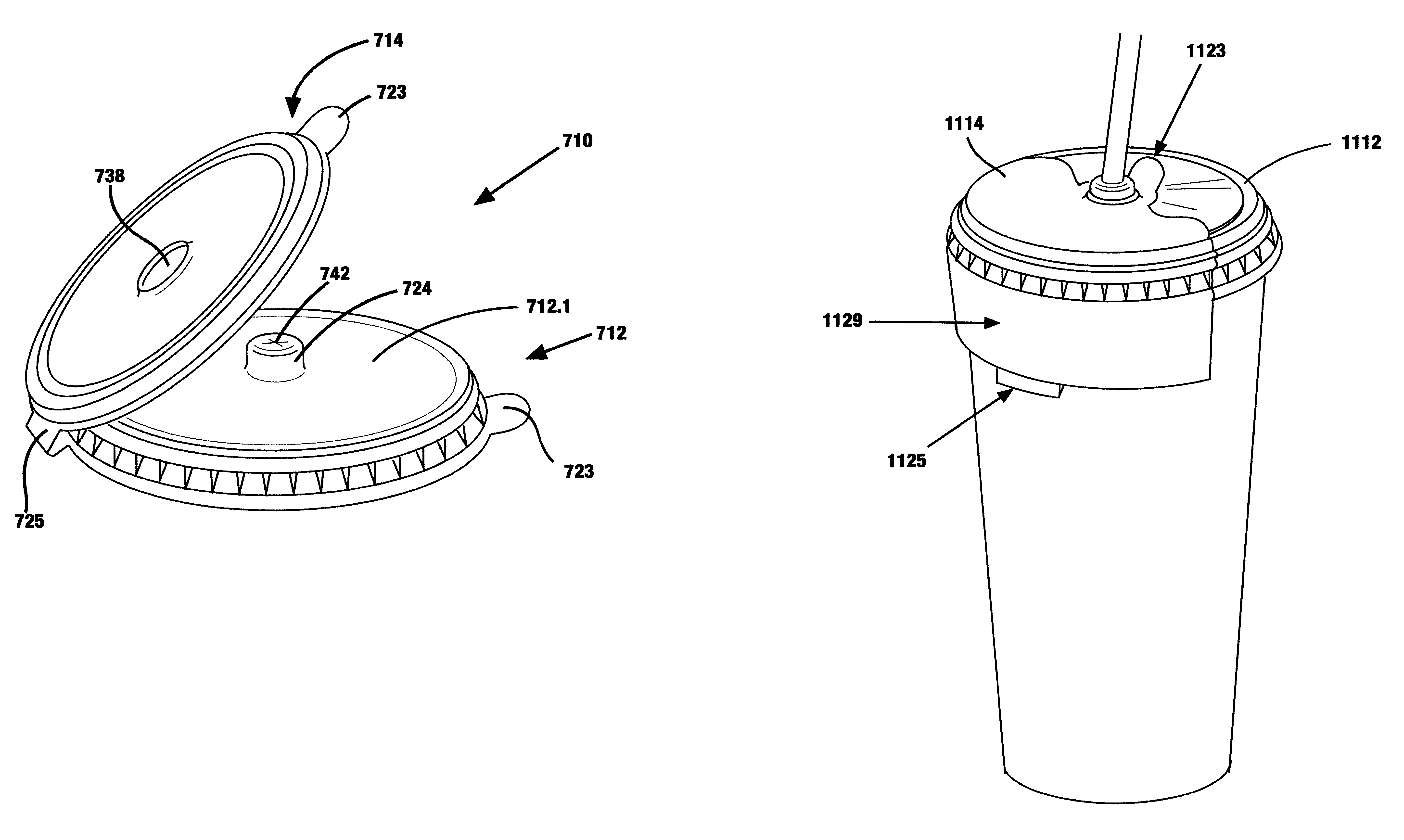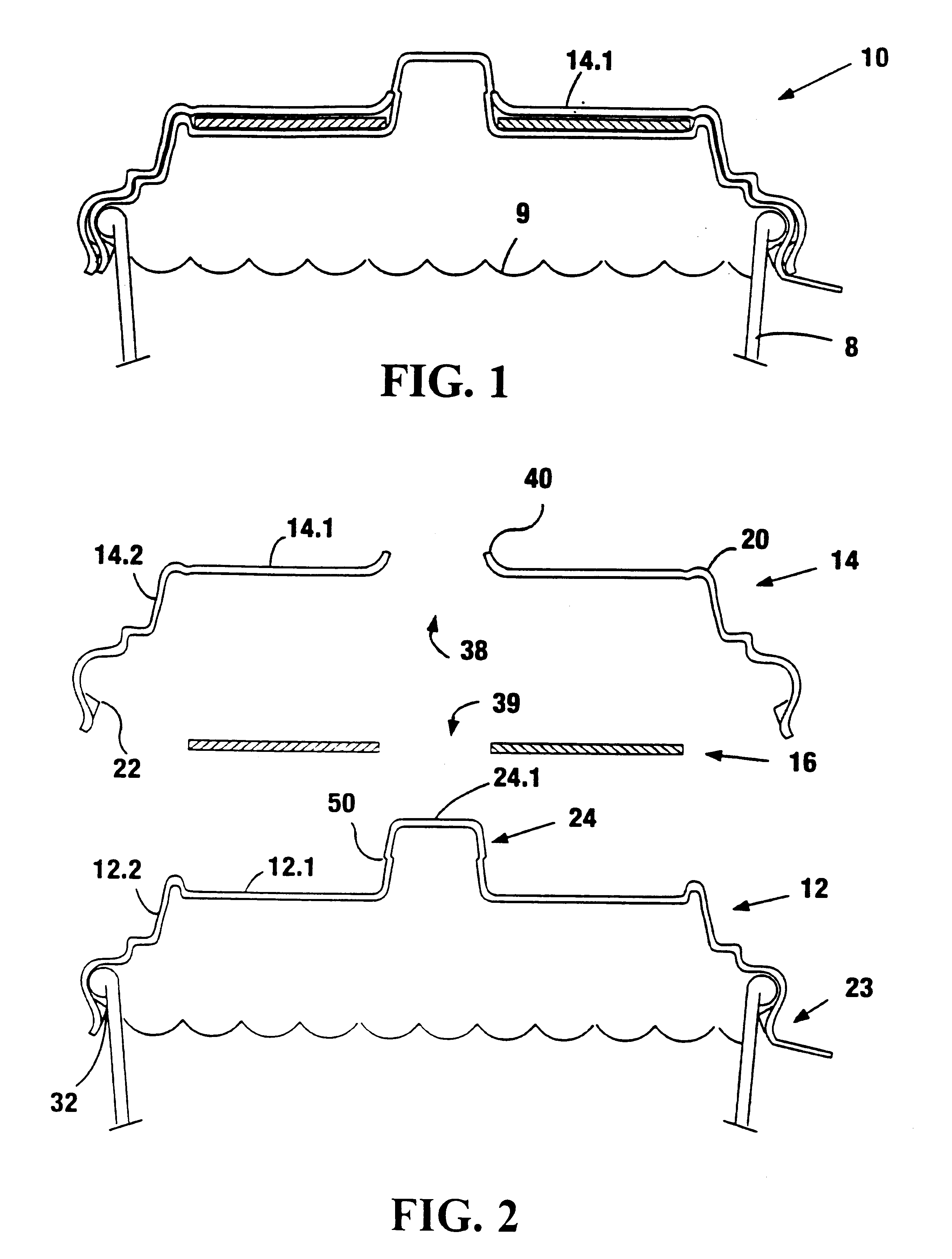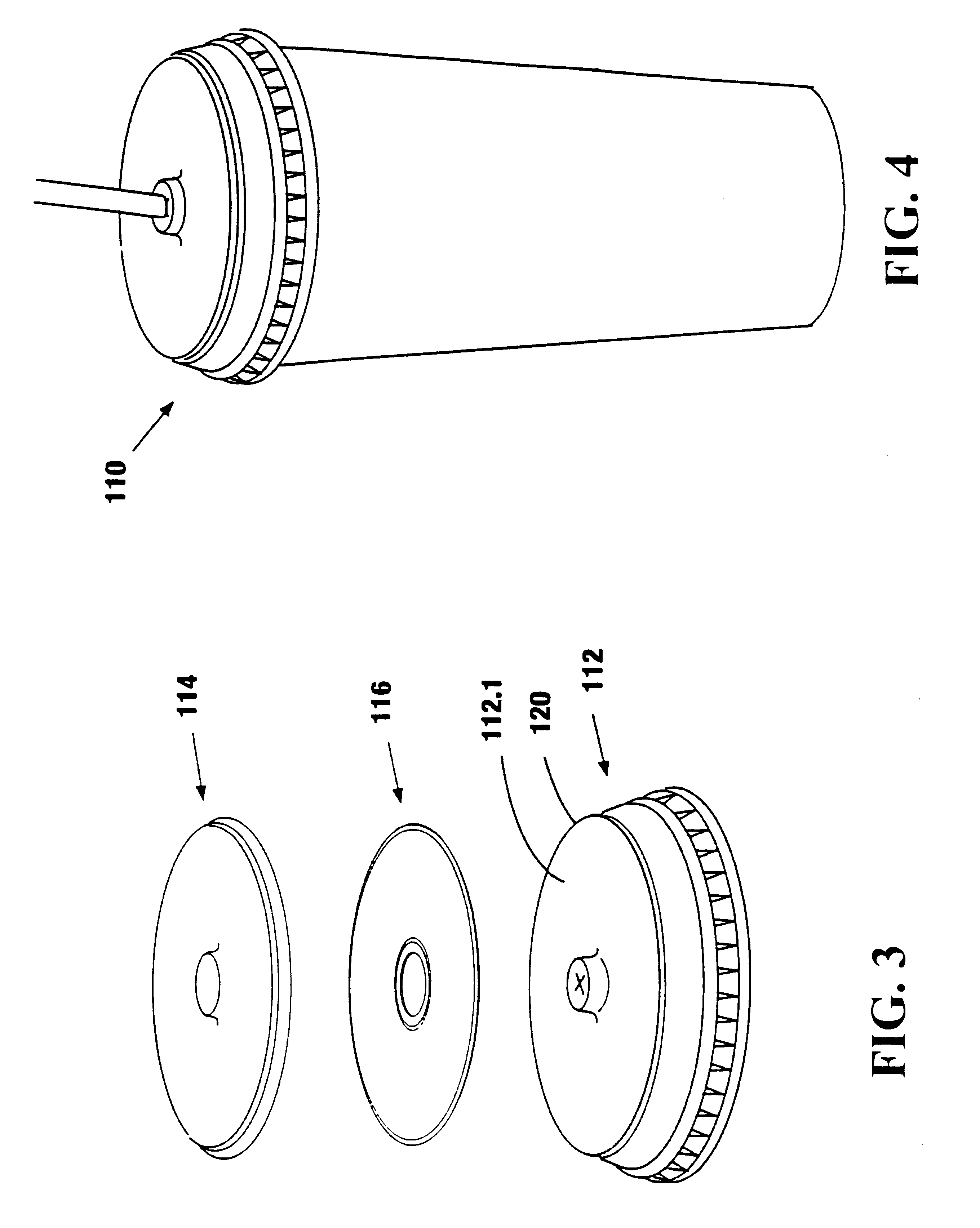Combined merchandise container and display device
a display device and merchandise container technology, applied in drinking vessels, refuse gathering, instruments, etc., can solve the problems of destroying the contents, unable to use the contents, and the closure of the compartment provided with the compartment, so as to achieve convenient and inexpensive formation
- Summary
- Abstract
- Description
- Claims
- Application Information
AI Technical Summary
Benefits of technology
Problems solved by technology
Method used
Image
Examples
fourth embodiment
Referring now to FIGS. 7-14, a fourth exemplary embodiment of the invention will now be briefly described. The embodiment of FIGS. 7-14 is similar to that of the foregoing embodiments and only pertinent differences will be described in detail. As before, like components are represented with like reference numerals incremented accordingly. For clarity is illustrating the fourth embodiment, four views of a top or upper part of the embodiment are provided (FIGS. 7-10) and four views of the bottom or inner part of the embodiment are separately provided.
FIGS. 7-14 illustrate a closure 310 wherein an inner member 312 and an outer member 314 are configured to provide a rectangular compartment 316 for holding a booklet or the like, rather than a disk-shaped compartment for holding a digital media disk. Raised portions 324 and 325 of the outer and inner members, respectively, are offset from the center of the closure such that a straw inserted through the closure into a cup passes along side...
ninth embodiment
FIGS. 26 and 27 illustrate the invention, similar to the embodiments of FIGS. 23-25 but wherein an outer member covers only a portion of the inner member thereby leaving a large portion of the digital media disk visible. Briefly, closure 810 of FIGS. 26 and 27 includes inner and outer members 812 and 814 connected by hinge 825. Outer member 814 includes a tab 823 to facilitate removal of the outer member from around a central pedestal 824 of the inner member. Pedestal 824 includes, as seen most clearly in FIG. 26, a protruding rim 826. An opening of the outer member is sized to bear against sidewalls of the pedestal immediately below rim 826. In this manner, the outer member holds a digital media disk 816 snugly against the inner member. Preferably, the material of the outer member is sufficiently resilient to permit the outer member to be passed over the pedestal and subsequently removed therefrom without significant effort.
By providing a container closure which leaves a large port...
tenth embodiment
FIGS. 28 and 29 illustrate the invention which is similar to that of FIGS. 26 and 27 but wherein a portion of the top part of the lid is bowed outwardly from a bottom portion. The bowed portion 927 permits a greater portion of the digital media disk to be viewed by a customer prior to removal of the outer member from the inner member. Moreover, the bowed portion permits easy removal of the entire closure from the drink container by permitting the customer to pass his or her finger under the bowed portion, then lift the bowed portion, and the inner member connected thereto, outwardly away from the top rim of the drink container.
PUM
| Property | Measurement | Unit |
|---|---|---|
| thickness | aaaaa | aaaaa |
| thickness | aaaaa | aaaaa |
| perimeter | aaaaa | aaaaa |
Abstract
Description
Claims
Application Information
 Login to View More
Login to View More - R&D
- Intellectual Property
- Life Sciences
- Materials
- Tech Scout
- Unparalleled Data Quality
- Higher Quality Content
- 60% Fewer Hallucinations
Browse by: Latest US Patents, China's latest patents, Technical Efficacy Thesaurus, Application Domain, Technology Topic, Popular Technical Reports.
© 2025 PatSnap. All rights reserved.Legal|Privacy policy|Modern Slavery Act Transparency Statement|Sitemap|About US| Contact US: help@patsnap.com



